
After breaking cover at the 2024 Santos Tour Down Under and clinching a general classification win under Stevie Williams, this launch isn’t exactly a surprise. We’ve already clocked the tweaks to the head tube, forks and seat tube - but now come the details: how much faster? How much lighter? And just how does the Ostro VAM stack up against the competition?
These questions encompass pretty much exactly what this update has focused on - and has taken advantage of the UCI's relaxation of its rules on minimum tube profiles (more detail on that further down).
But when it comes to the ‘ride feel’ of the Ostro VAM, Factor has tried as much as possible to keep it exactly as before. Israel – Premier Tech’s riders said they liked it as it was, so that’s how it stayed. If it ain’t broke…
Fork and crown
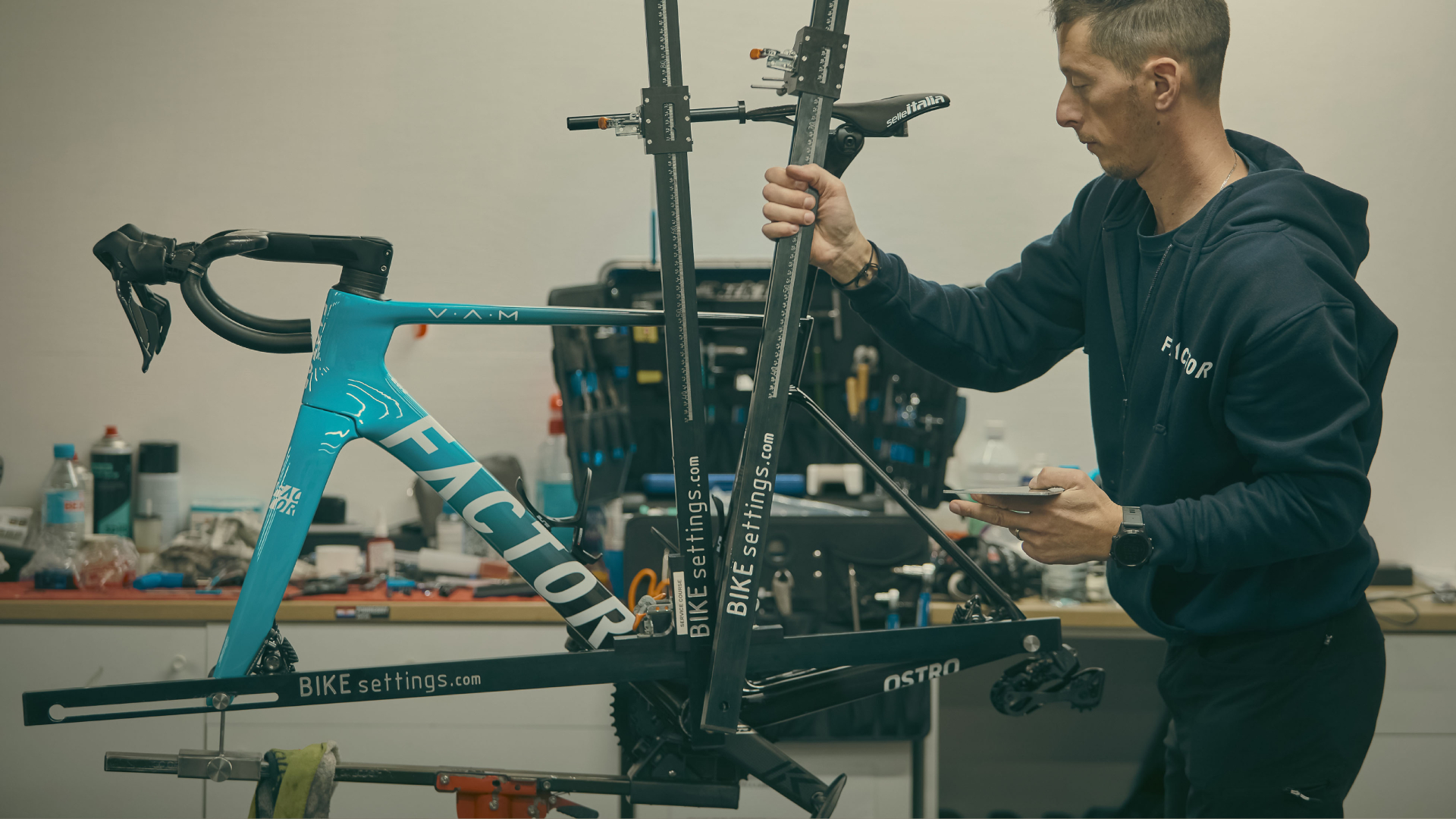
Like the wind, let’s start at the front and move to the back. Factor has made some pretty significant changes to the fork legs - bringing the inside face a little closer to the wheel and increasing the clearance between the crown and the tire.
Unlike more basic CFD software, Factor’s allows their designers to set the wheels ‘spinning’, disrupting the airflow as the wheels naturally would when being ridden in the real world - rather than simply remaining statically fixed in place. It’s this modelling which informed Factor’s adjustments to the shape of the fork legs, as they saw this better promoted airflow past the rotating wheel.
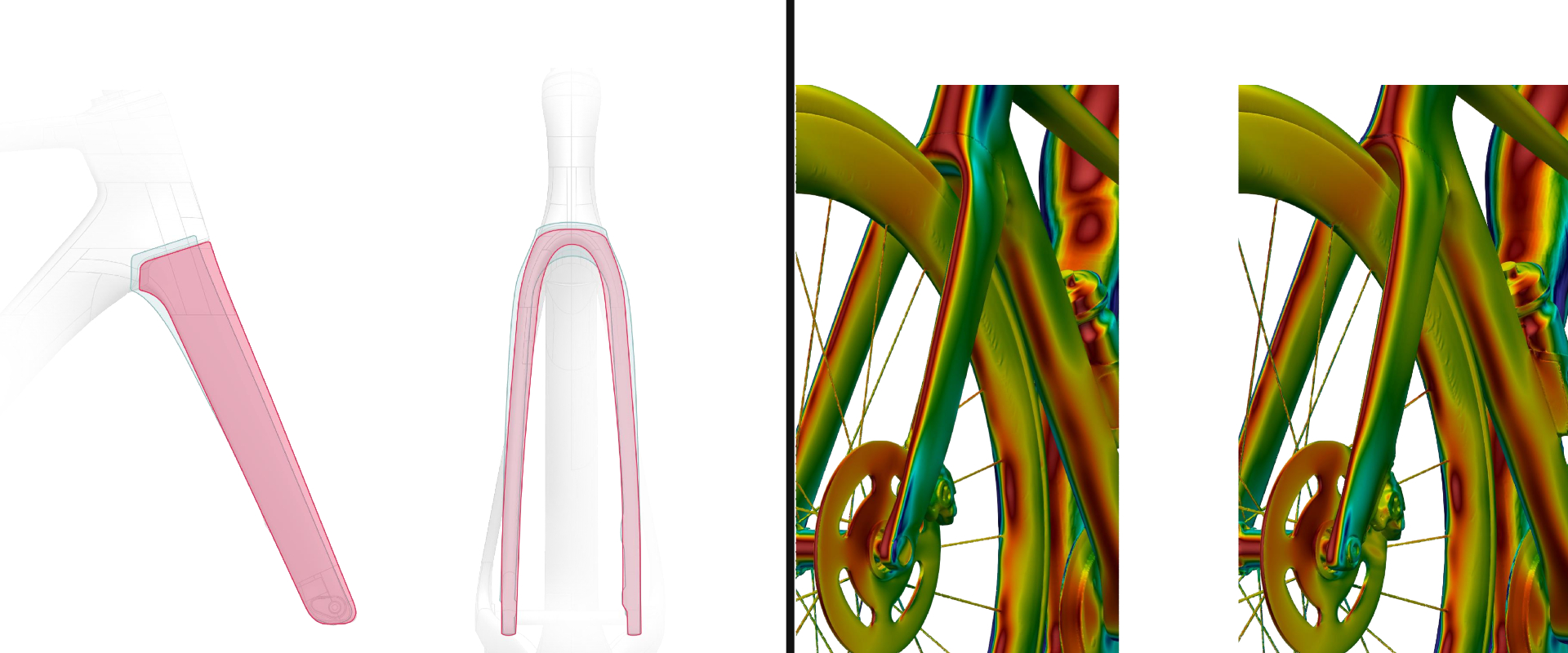
Although the overall surface area has been reduced and the fork crown is much slimmer than in the previous iteration, the fork weight has actually increased by nine grams - although this is more than offset by the 45 gram saving Factor has made on the frame. The material shaved off to create the new shape (and some) has been reallocated elsewhere in the fork to ensure it remains just as stiff as before.
Head tube and top tube

Harder to see when looking straight on, but with a top-down view it’s clear how much of a change Factor has made here. Relative to the steerer tube, the headtube has been elongated, whilst also losing material around the sides and the back.
Factor’s modelling has shown that this combination both reduces the CdA of the Ostro VAM (as it’s a slimmer object) whilst also enhancing the airflow retention (as it’s longer). Again, Factor claims that this reconstitution of the material has boosted the aerodynamics without a penalty to the weight or the stiffness.
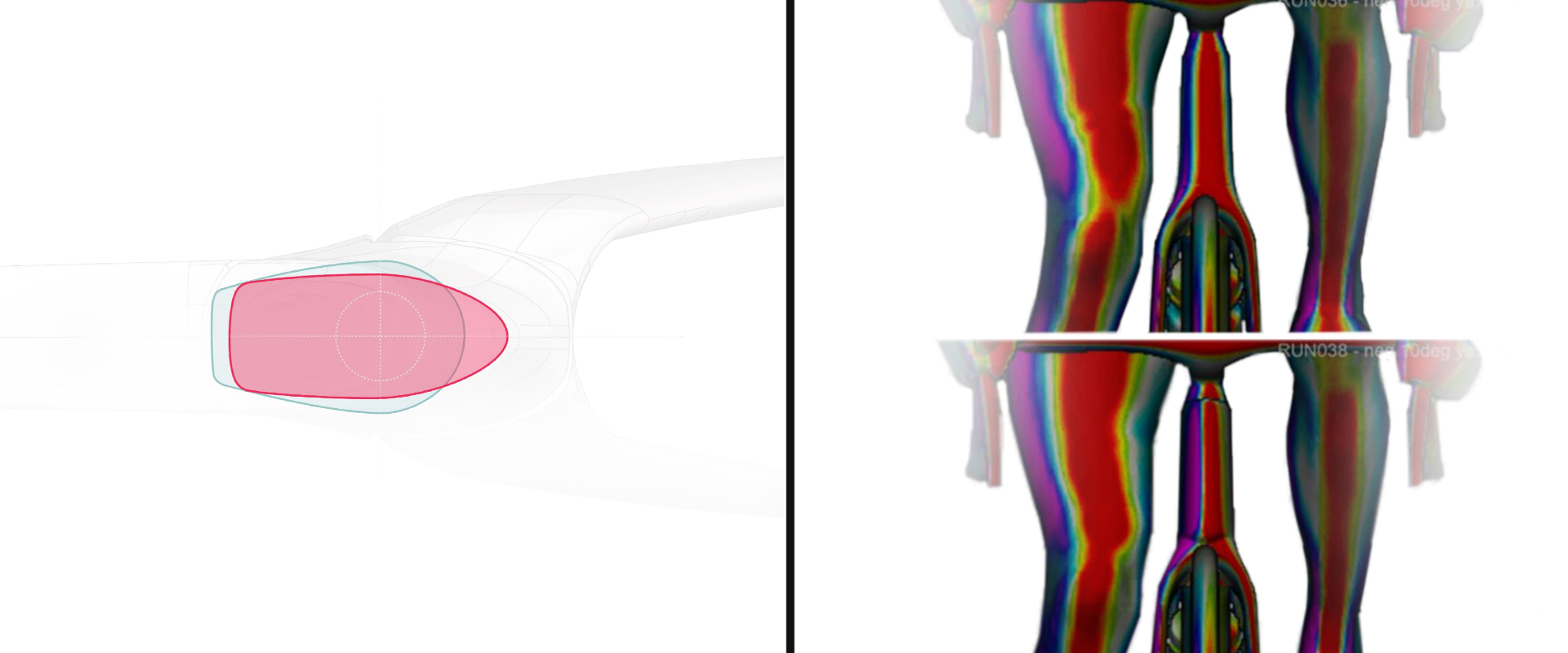
The next step after having smoothed the airflow from the front was to maintain this better towards the rear of the bike. The top tube is now slightly wider towards the front, keeping in better line with the head tube, and then proceeds to narrow down a litter skinner as it nears the seatpost - which itself has been made narrower, too.
In this instance, Factor has been able to save a little weight whilst maintaining the same stiffness.
Seatpost and seat tube
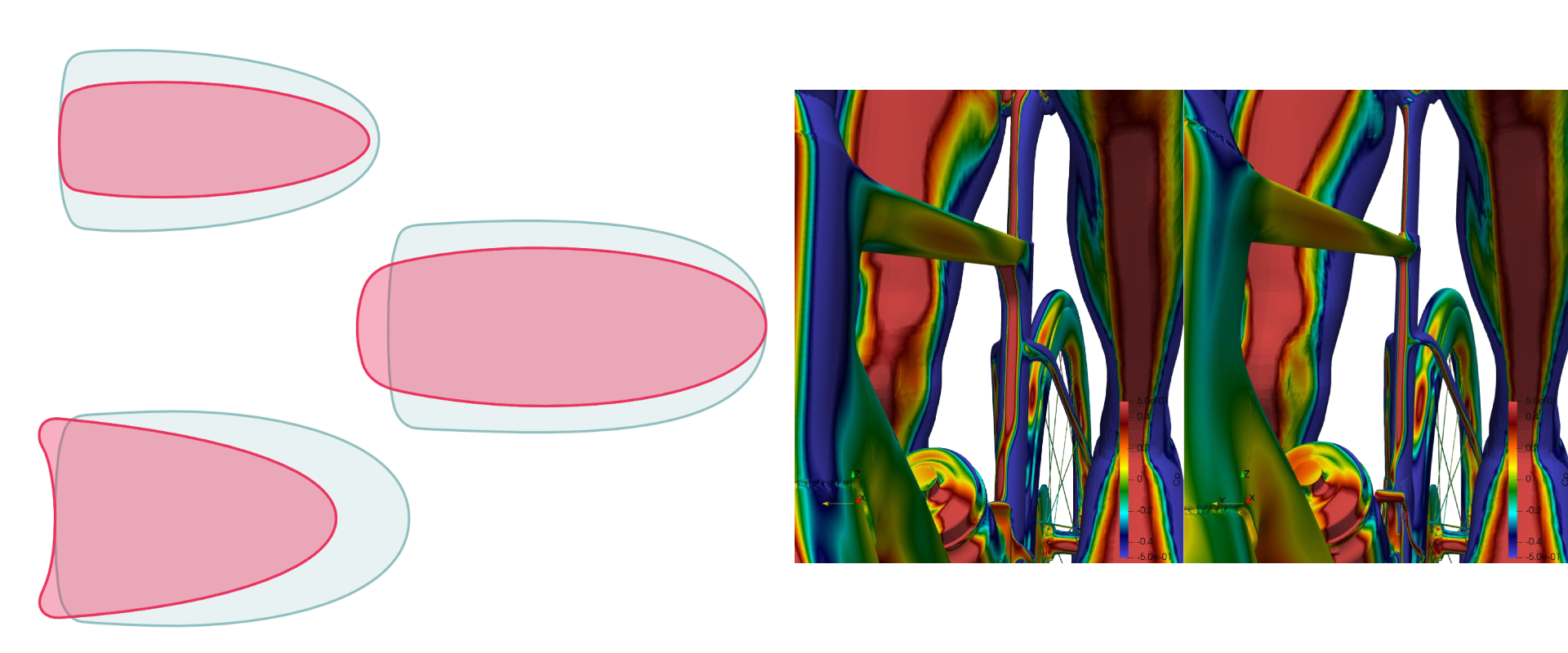
Whilst we had a trend towards blunter seatpost profiles for a while, Factor has rowed back from this and leapt upon the UCI’s changes in its regulation regarding the minimum permitted tube profiles - essentially, how skinny a tube is allowed to be.
Although the seatpost itself has been made a little shorter, it is now much more sharply angled and its overall width has been reduced by a whopping 36%. It’s a similar story for the seatpost itself. This has seen a reduction in width by 20% - although the length of the tube has actually been increased slightly to house the seat post retention plate and better manage the airflow coming from the top tube and head tube upstream.
Now for the crucial point - what tire size has the Ostro VAM been optimized around? The lower section of the seatpost has been shaped to ‘nest’ a 28mm tire, making for a ‘continuous, integrated aerodynamic profile’ off the seatpost and on to the tire/wheel.
In this case, it’s actually the frontal images which really convey the differences in seat tube shape the best - the now Ostro VAM is really significantly slimmer than the previous iteration.
The numbers
So those are the changes, but what do they all add up to? Factor claims a 70 gram drag reduction, which equates to seven watts at 48 kph compared to the previous iteration of the Factor Ostro. A lot of the aerodynamic gains have been made at higher yaw angles - which can be a better map to real-world performance, as the wind very rarely comes from directly head on. That said, the faster you go, the shallower the effective yaw angle becomes.
Factor bought a Cervelo S5 and Specialized Tarmac SL8 and quite interestingly found that at super shallow yaw angles, the Cervelo S5 actually clocked the least drag. But as the yaw angle increased, the drag of the Factor Ostro VAM became the lowest out of those bikes tested. Of course, this is Factor’s own testing rather than being independently managed, which is worth bearing in mind.
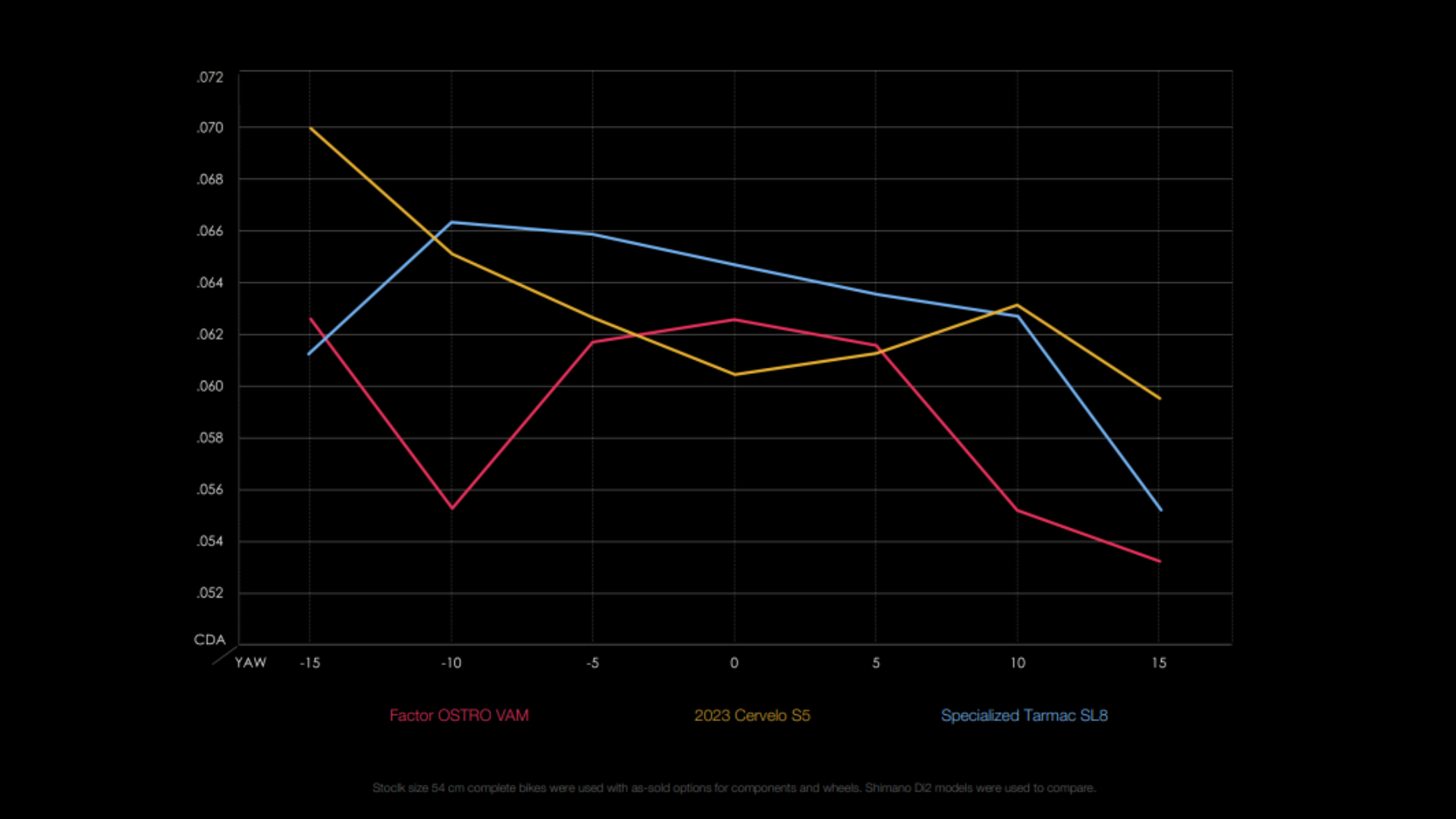
In terms of the weight, as mentioned, there is a 45 gram saving on the frame weight - now 820 grams in a (painted) size 54cm, compared to 865 grams previously. But then there has been a nine gram increase in the fork. The total system weight of the frame with all its fittings (bar, fork, seatpost with hardware etc/) has gone from 2,144.8 grams to 2,096 grams - a saving of 48.8 grams in total.
And finally the prices: the Premium Package Frameset comes in at $5,499 / £5,449 and the Premium Complete Shimano Ultegra build will set you back $9,199 / £8,999. The range tops out at $11,499 / £11,399 for the Premium Complete SRAM Red eTap AXS power meter build. Full details can be found at Factor’s website here.







